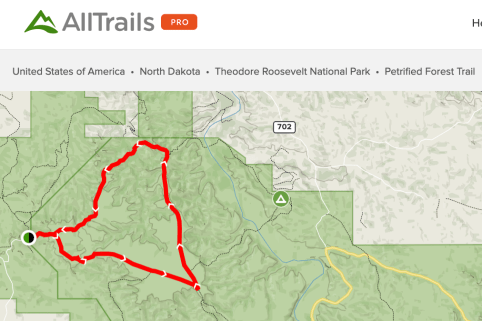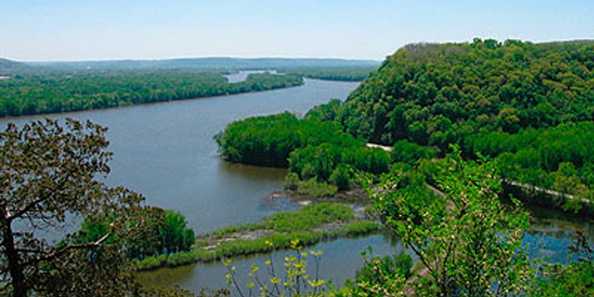
After the convent, we were ready for a drink and a bite to eat.
We were a couple nights in Ferrara, checking out another great Emilia-Romagna city, famous for many things, among them the fortress, the bread, and canoes. The archeological museum actually has a canoe room, where monoxylous canoes (made of wood, by the locals, for paddling around the Po River delta in 300 AD), are on display. Before becoming canoes, they were trees. They were long, they were heavy, they were wondrous.
Somehow Tizi got wind of a monastery close by (Monastero di S. Antonio in Polesine), so of course we went and, hey, we got lucky. She knocked. The little door on the door slid open. What do you want? a mouth whispered. Um, Tizi said, vespers? We could go in, but we couldn’t look at them. I remember music, I remember harmony (but not much), I remember the hard bench we sat on.
“Wonderful,” she said.
“Pretty good,” I said. Adding, “Did you know the world’s oldest winebar is in Ferrara? I did some research.”
“I bet you did,” she said.
We found it, called al Brindisi (a toast!), not far from our hotel, and enjoyed a glass of wine and the famous bread. After communion we ordered more food, the cappellacci (trans: ugly hats) with ragu, and affetato (trans: assorted sliced meats). And more wine.
“Copernicus lived upstairs,” I said.
“You did some research.”
When he was a student in Ferrara.
That would have been around 1503. I like to think of him coming downstairs and tipping a few with his friends, talking about the science of the heavens, complaining about the Dante paper he had to write for his lit class–how, he might have wondered, was writing a paper about Dante going to help him get a job?–when what he really wanted to do was sit outside at night and look at the planets through his telescope.

This morning I remembered the nuns and the canoes on the Po and Copernicus.
In a few days we will leave home and drive 3100 miles to get to Mariposa, CA, where our son and his wife live. We’re bringing binoculars with us this trip.
I don’t know how we overlooked that detail the last couple times we drove to California.
In the weeks before we leave, my early hours out of bed in the morning I plan the trip and get some paperwork ready. An Excel itinerary listing where we’re going to stay, how many hours we will drive from home to La Crosse, WI, from there to Medora, ND, from there to Whitefish, MT; and so on; a list of trails we might walk at stops along the way; pdf prints of reservation documents we might need; permits and vehicle passes we will need to drive Going to the Sun Road in Glacier and to take another walk in Yosemite.
Lately I’ve been stepping outside on these early mornings, to look up in the sky, to enjoy the dark, to feel the aloneness and awe that comes from being outside at night. A few mornings ago I saw something funny in the moonless night sky and went back inside the house for those binoculars. A couple minutes later, standing at the end of the driveway, I pointed them at the bright celestial thing. It looked like a hook-shaped star, which didn’t so much come into focus as, slightly enlarged, start bouncing around in the sky because I couldn’t hold the binoculars steady enough to see it clearly. What was it? A mystery.
Put binoculars on the list of things to pack, I thought to myself. With the referee whistle I just bought to scare away bears we might see on the trail. And download some trail maps.
#
Our first drive out West a year ago, we got lost on a trail in Flagstaff. A couple hours into the walk we saw a hiker, asked her to pull over.
Do you know where we are?
Got a map?
No.
Got the app?
No.
She showed us on the app where we were. We kept going, bearing right at the fork she indicated would take us back to the parking lot (trail head in hiker parlance), going left at another fork when it seemed like a correction was in order. Walking longer than we thought we should have, we eventually pulled over another hiker.
Do you know where we are?
Got a map?
No.
Got the app?
No.
He showed us where we were.
Next trip, six months later, it happened again, in the Black Hills, on a longer hike, a rockier, hillier, remoter location. On that seven mile loop we saw exactly two people the whole time. Are we going the right way? Got a map? No. Got the app? No.

Yes, we now have two apps, Maps.me and All Trails. And binoculars. Something tells me I should be reading up on the bears of Montana. Is bear spray a good idea? Will a bear be spooked by a whistle?
#
A year ago we crossed the Mississippi River up in La Crosse, WI, and decided that on our next trip we would get close to the river. In our hotel room that night, I went online and downloaded photos that approximated what we saw when we crossed the river and then kept going, doing 78 mph, hauling ass for Austin, MN. I posted them online. Look what we saw. But didn’t really see. Next time, Tizi said. Next time, I agreed, we’re going to see it.
So this trip, our first deviation from the Interstate will be Prairie du Chien, the second oldest settlement in Wisconsin (1817). We’ll drive north on the Great River Road 100 miles to La Crosse, through the Great Mississippi National Wildlife and Fish Refuge, past the Yellow River State Forest and the Rush Creek State Nature Area, past Lynxville, Ferryville, DeSoto, past Victory. Past, past–it’s an agony to keep going, because you know there are secrets and stories and local oddities you will only find there, along the river, in Prairie of the Dog (named du Chien by French trappers who translated a local Indian chief’s name into French).

Our first night in La Crosse we will eat fried curd for the first time (at least I will), recommended by a friend from La Crosse. Perhaps it is the oldest fried curd establishment in La Crosse, maybe in all of Wisconsin. Next morning we will hike a few trails up in Trempealeau, getting views from above the river, getting close to the river on foot, then drive back into La Crosse to visit St. Rose Convent, where our friend was one of the Franciscan Sisters of Perpetual Adoration. The tour, her husband tells me, is worth it.
On the Franciscan Sisters website there is this land acknowledgement:
“St. Rose Convent occupies the unceded ancestral and traditional land of the Sauk and Meskwaki, the Ochethi Sakowin, and the Ho-Chunk peoples. We understand that our organization and our city were founded upon the exclusions and erasures of many Indigenous peoples and we vow to work towards dismantling the ongoing legacies of settler colonialism.”
Exclusions and erasures. These days such a frank and humble statement about how we got where we are is striking. Whose river is it? Whose land? We’re all borrowers and thieves.
#
“The high plains, the beginning of the desert West,” Kathleen Norris writes in Dakota, “often act as a crucible to those who inhabit them. Like Jacob’s angel the region requires that you wrestle with it before it bestows its blessing.”
That’s where we’re heading, the high plains, the North Dakota Badlands, hundreds of miles of nothing but nature, painted canyons, petrified forests, vaulting skies. I don’t want to wrestle. I just want to stop the car and take a few walks. I don’t expect to feel blessed, but I’m happy to put a little awe in my life.
Psychologists describe awe as one of the basic human emotions (along with happiness, sadness, fear, anger, disgust) with its own distinctive and universal facial expression: a gaze upward, mouth open, slightly pinched eyebrows. Try that. You stand next to the Mississippi, you crawl up a mountain trail, you approach a disappearing glacier, you step inside a cathedral, and you feel awe, “fear mixed with admiration.” You feel small. And for some reason, you’re okay with that.
Planning this trip, I looked for good places to look up in the sky at night. I figured Nevada would be a good place. We’re spending a night in Elko. A cursory search produced a number of possibilities, dark parks, among them: Massacre Rim, Squaw Creek Reservoir, Tonopah Mining Park. If we go star- gazing, it will be at the end of a long day. We will have driven 8-10 hours. After dark I don’t see us driving far into the desert to find the right sky. In truth, we will probably be able to go anywhere to see stars at night the way the ancients saw them, as if for the first time, the original sky.
That’s all we want.

Just love the way you write…. Have an “awe”some trip! ❤️
I love all the planning and new gear, enjoy every minute! The mighty Mississippi 🙂